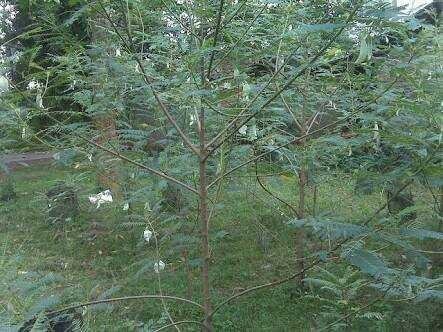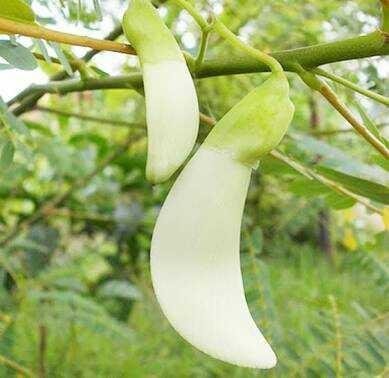Benefits of Turi Crops
Turi (Sesbania grandiflora) is a small tree member of the tribe of Fabaceae. Plants with many uses are originally thought to be from South and Southeast Asia, but have now spread to the various tropical regions of the world.

Leaves, flowers and pods are still young can be eaten as a vegetable or salad after boiled first. This young leaves smell bad and slimy, even though it has been steamed. But this leaf fresh vegetables eaten by mother to add milk. The flowers are tasty and sweet, so popular as a mixture of pecel.To make this pecel, turi flower (can also be replaced with long beans) is mixed with "handsome" sprouts, along with melinjo skin that has been steamed boiled until cooked enough. If boiling these ingredients only half cooked, will cause a sense of "itching" in the throat because the feathers have not fallen out. White turi fruit is a very popular vegetable in Java. The pods can be eaten like long beans.

Pepagannya can be used as a medicine. The bark is squeezed in water or boiled, and the water is drunk to treat the spasm, dysentery, blood murmur, or diarrhea in general. But if too much to drink, this cooking water will work as a drug vomiting (emetic).
Red flowers are useful as a medicine. The red bark is sold under the name of timor wood. High levels of tannin is what causes can be used for wound healing or dysentery. In general this timor wood is used to treat dysentery and overcome inflammation, bruising, and swelling.
treatment, turi can be used for sprue, inflammation of the intestines (by drinking turi pepagan stew) dysentery, diarrhea, scabies (ie with the bark collided in place, chicken pox, sprained, stricken, whitish, cough, beri-beri, sore head, sore throat, puerperal fever, milk production, slimy nose, cough, rheumatism, and wounds, while by ethnic Sumba, leaves and pepagan turi are used to be affixed to fractured parts, which are then tied with a cloth and wrapped by a leaf midrib bananas during the day.
According to scientific research, this plant sap is an astringent. It contains the main dye, namely agatin and zantoagatin, then basorin, and tannin. This plant seed contains 70% protein, and the leaves contain harmless saponins, though can be used as a substitute for soap to wash clothes. The flowers contain variable sugar content and a source of vitamin B. All parts of this plant are reported to cure night blindness; if so, this plant contains vitamin A.

Recent studies have found that turi root contains active ingredients that are anti-tuberculosis against Mycobacterium tuberculosis bacteria. These ingredients include betulinic acid and three isoflavanoids.

Pepagan turi lets out the lymph which will harden into gom when it gets the air. This gum is used as a substitute for Arab gom, and is used in food and adhesives. In Karimunjawa, the mucus is used for dye. The turi sours were used by ancient fishermen to smear fishing lines and nets to be more durable. This sap can also be mixed into black paint used to preserve mine or wooden buildings; other than that sap is also binding paint. Gom turi is also used as a glue in bookbinding. In addition to sap, liquor liquor sturi used to soak the fishing equipment so durable. In Kebumen, boiling water mixed with soot is used to give a black color to the woven bamboo handicrafts.
Turi leaves can also be used for fodder and green manure. Many records show that turi is a forage favored by ruminant and high nutritious value.] Every 100 g of dry weight, turi leaves contain about 36% crude protein and 9600 IU of vitamin A. The concentration of Nitrogen in the leaves is about 3.0- 5.5%, and higher in seeds, up to 6.5%. The leaf's digestibility ranges from 65-73%, with a low crude fiber content (5-18%). And although this forage is known to contain saponins and tannins, so far no toxic reactions have occurred in ruminants. However, its use for single (monogastric) monkeys need to be careful, as this feed is deadly to chickens.